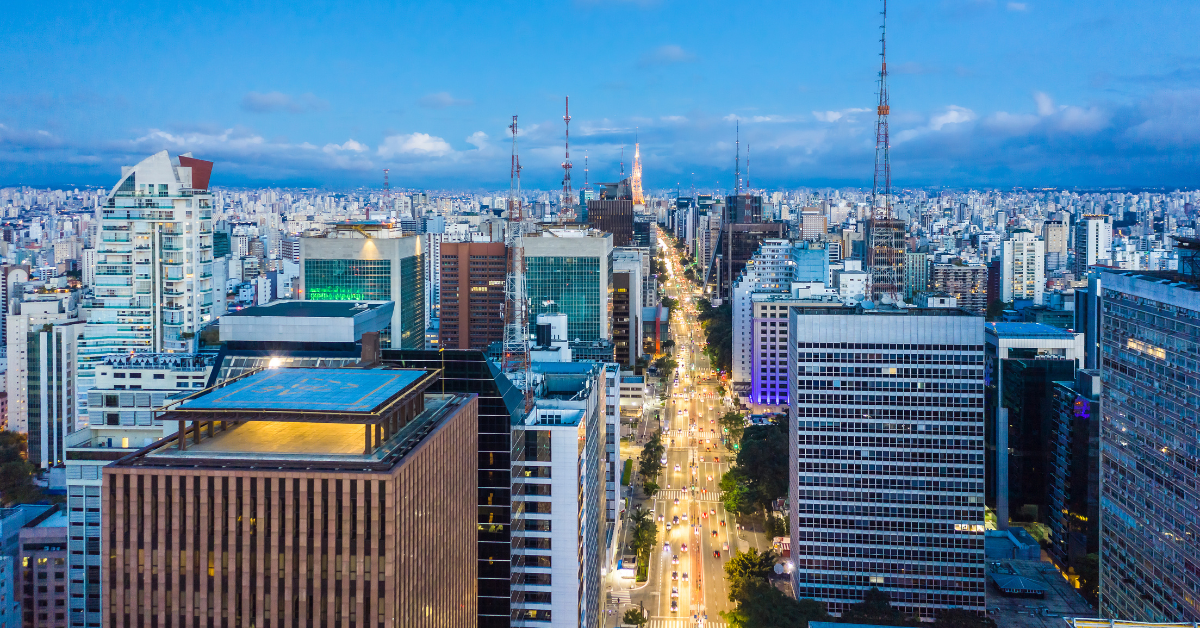São Paulo is the largest city in Brazil and home to the world’s largest Japanese community. The kanji representation “聖市” derives from Saint Paul, and reflects a uniquely Japanese interpretation.
- The Origin of the Kanji Representation “聖市”
- The Historical Image of São Paulo Held by Japanese People
- Contemporary São Paulo and the Presence of the Japanese-Brazilian Community
- The Charm and Challenges of São Paulo for Japanese People
- São Paulo from the Perspective of Sports
- The Appeal of São Paulo in Culture and Daily Life
- The Future Vision of São Paulo Seen by Japanese People
- Conclusion
The Origin of the Kanji Representation “聖市”
São Paulo in Portuguese means “Saint Paul.” Since the city bears the name of a saint, it came to be represented in Japanese as “聖市,” meaning “Holy City.” This expression is not just a translation but a culturally nuanced interpretation that respects the city’s religious roots.
Japanese newspapers, magazines, and media targeting the Japanese diaspora have used it for decades, making it a symbolic term to refer to São Paulo.
The Historical Image of São Paulo Held by Japanese People
The relationship between Japan and São Paulo began with the arrival of the Kasato Maru in 1908. Many Japanese immigrants initially worked on coffee plantations, later moving into commerce and industry where they found success. Values such as “diligence,” “effort,” and “prosperity” became deeply tied to the memory of the immigrant experience in this city.
Below is a summary of representative images Japanese people have historically held of São Paulo:
| Era | Japanese Activity | Image |
|---|---|---|
| Early Immigration (1908–) | Labor on coffee plantations | Endurance and diligence |
| Postwar Reconstruction | Advancement in commerce and industry | Success through effort |
| Modern Era | Business and cultural exchange | Prosperity and internationalism |
Contemporary São Paulo and the Presence of the Japanese-Brazilian Community
Today, São Paulo is home to around 1.5 million people of Japanese descent, forming the largest Japanese community outside Japan. The Liberdade district is famous as a hub of Japanese culture, attracting visitors with festivals and cuisine.
In addition, Japanese Brazilians play important roles in education, business, politics, and academia. São Paulo is therefore regarded not just as a city of immigrants, but as a metropolis where Japanese culture has taken root while merging with Brazilian society.
The Charm and Challenges of São Paulo for Japanese People
São Paulo is a city where prosperity and challenges coexist.
| Charm | Challenges |
|---|---|
| Center of economic activity | Issues of public safety |
| Largest Japanese community in the world | Heavy traffic congestion |
| Hub of Japanese culture | Expanding social inequality |
| Multinational culinary culture | Rising cost of living |
For Japanese people, it is a city where they can feel both vitality and familiarity, while also being aware of very real issues that affect daily life.
São Paulo from the Perspective of Sports
São Paulo is known as the center of Brazilian football. Clubs such as Corinthians, São Paulo FC, and Palmeiras enjoy immense domestic and international popularity, with stadiums filled by passionate fans.
Baseball, introduced by Japanese immigrants, continues to thrive in community leagues, making sports a bridge between cultures. Thus, the city embodies both “the passion of football” and “the familiarity of baseball.”
| Sport | Characteristics | Japanese Impression |
|---|---|---|
| Football (Soccer) | Popular domestically and internationally; home to major clubs | A passionate and vibrant city |
| Baseball | Sustained within the Japanese-Brazilian community | A cultural link with Japan |
| Judo & Karate | Spread by Japanese immigrants | A symbol of Japanese culture |
The Appeal of São Paulo in Culture and Daily Life
São Paulo is not limited to Japanese culture; it is a city where diverse global cultures coexist. Influences from Italian, Portuguese, and Arab immigrants enrich the city’s food, music, and traditions.
The festivals of Liberdade in particular symbolize how Japanese culture has been embraced within Brazilian society.
| Cultural Field | Content | Impression Among Japanese |
|---|---|---|
| Culinary Culture | A blend of Japanese, Italian, and Brazilian cuisines | International and diverse |
| Festivals | Liberdade cultural festivals, Bon Odori | Nostalgic and familiar |
| Arts | São Paulo Museum of Art, international film festivals | Sophisticated urban charm |
The Future Vision of São Paulo Seen by Japanese People
São Paulo will continue to grow as a center of economy, culture, and sports. For Japanese people, it is increasingly viewed as a partner city for building the future together, while honoring the history of immigration.
Cooperation in education, technology, expanded sports exchange, and joint cultural events present new opportunities for both societies.
Conclusion
The kanji representation of São Paulo as “聖市” respects the city’s religious heritage while reflecting a uniquely Japanese cultural interpretation. For Japanese people, São Paulo represents the history of immigration, the prosperity of the Japanese-Brazilian community, and a metropolis where sports and culture coexist.
It is a city that stands as an economic hub, a cornerstone of Japanese diaspora identity, and a place where sports and culture leave a deep impression. That is the image of São Paulo, known in Japanese as “聖市.”






